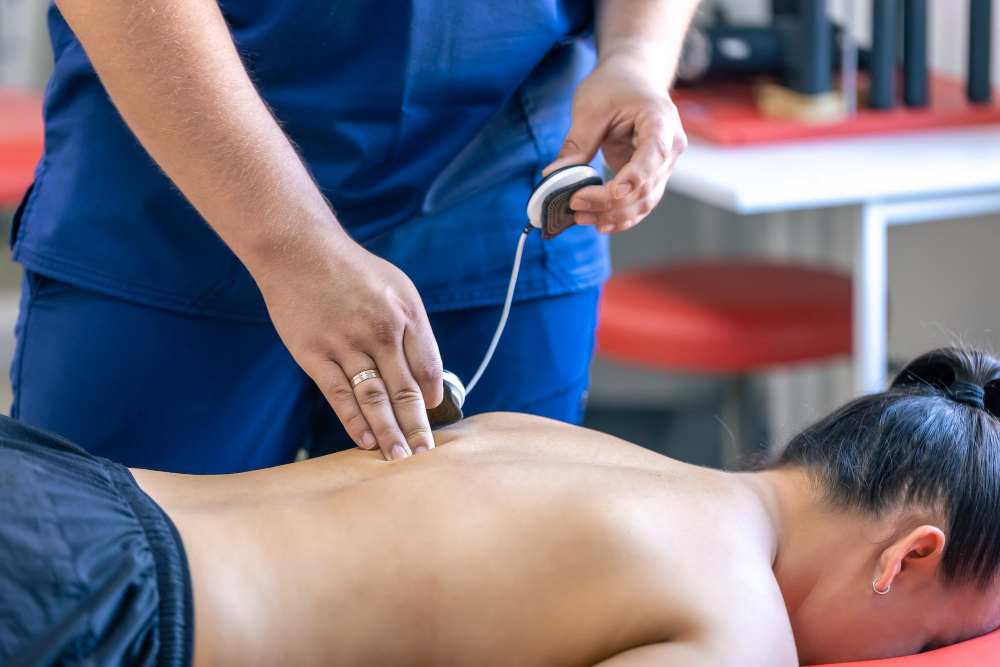Did you know osteopathy can work wonders for your posture? If you’ve ever wondered how to fix poor posture or how long it takes to achieve a healthier stance, you’ve come to the right place! Our specialists are here to help you understand the importance of good posture, identify the symptoms of poor posture, and explore how osteopathy can be your key to posture correction.
Why is good posture so crucial?
Good posture isn’t just about looking poised and confident; it plays a vital role in maintaining overall health and well-being. One of the most immediate benefits of good posture is the prevention of chronic pain, particularly in the back, neck, and shoulders. When your spine is correctly aligned, the load is evenly distributed across the supporting muscles and ligaments. This reduces the risk of muscle strain, tension, and discomfort.
Proper posture also allows your lungs to fully expand and contract, facilitating better breathing. When you slouch or hunch, your lung capacity is restricted, leading to shallow breathing. Deep, full breaths are essential for oxygenating your body and brain, which can enhance concentration and overall energy levels.
Poor posture can also impede blood flow and circulation, potentially leading to issues like varicose veins and cardiovascular problems over time. When you sit or stand with good posture, blood can flow freely through your veins, reducing the risk of circulatory issues!

Symptoms of bad posture
Identifying the symptoms of poor posture is the first step towards improvement. Common signs include:
- Back and neck pain: Frequent aches in these areas can be a result of slouching or hunching.
- Headaches: Poor posture can lead to tension in the neck and shoulders, triggering headaches.
- Fatigue: An inefficient posture can exhaust your muscles, making you feel tired.
- Restricted mobility: Poor posture can limit your ability to move comfortably.
What can cause bad posture?
Understanding the root causes of bad posture can help prevent and correct it. Many of us spend a significant portion of our day sitting, whether at a desk, in front of a computer, or watching TV. Prolonged sitting can weaken the muscles that support your spine and encourage slouching or a rounded back.
Speaking of sitting at a desk, your workstation setup can significantly impact your posture. Chairs, desks, computer monitors, and keyboards that are not ergonomically designed can force you into uncomfortable positions that strain your back, neck, and shoulders. Everyday habits can also play a significant role in poor posture. For instance, constantly cradling your phone between your ear and shoulder, or carrying a heavy bag on one shoulder, can lead to neck and shoulder strain.
Weak or tight muscles can also pull your body out of alignment. For example, if the muscles in your chest are tight, they can pull your shoulders forward, causing a rounded shoulder posture. Conversely, weak back muscles can contribute to slouching.
Can osteopathy help improve posture?
Absolutely! The journey to improved posture begins with a thorough assessment by an osteopath. They are trained to evaluate your posture, identifying areas of imbalance and tension. This assessment may involve observing your standing, sitting, and walking postures, as well as assessing the mobility of your joints and the condition of your muscles.
Osteopathy is a holistic approach to healthcare that focuses on enhancing the body’s natural ability to heal and function optimally. By using manual techniques such as stretching, manipulation, and massage, they can address musculoskeletal issues that contribute to poor posture.
Can osteopathy help improve balance?
Balance is a fundamental aspect of physical well-being that is closely linked to posture. If you’re looking to enhance your overall balance, osteopathy can indeed play a vital role.
Good posture serves as the foundation for balance. When your body is properly aligned, it distributes weight evenly across your musculoskeletal system, reducing the risk of falls and instability. Osteopathy, with its focus on posture improvement, indirectly contributes to enhanced balance.
Osteopaths are also trained to identify balance issues related to musculoskeletal imbalances, joint restrictions, or muscle weaknesses. They assess your gait, coordination, and proprioception (your body’s ability to sense its position in space).
How to improve posture and balance with Osteopathy
Osteopathy offers a holistic and effective approach to enhancing your posture and balance:
Comprehensive Assessment:
Your journey to better posture and balance begins with a comprehensive assessment by an osteopath. During this initial evaluation, your osteopath will:
- Analyse your posture to identify misalignments and areas of tension.
- Assess your balance and coordination to pinpoint any issues that may be affecting your stability.
- Examine your musculoskeletal health to identify underlying causes of posture and balance problems.
Personalised treatment plan:
Based on the assessment findings, your osteopath will create a personalised treatment plan tailored to your specific needs and goals. This plan may include a combination of the following elements:
Manual techniques:
Osteopathic treatment often involves gentle, hands-on techniques such as spinal manipulation, soft tissue massage, and joint mobilisation to address musculoskeletal issues affecting posture and balance.
Exercise prescription:
Your osteopath may prescribe exercises designed to strengthen postural muscles, improve joint mobility, and enhance balance and coordination. These exercises can be performed both during your sessions and at home.
Ergonomic and lifestyle recommendations:
Osteopaths provide guidance on ergonomics, helping you set up your workspace or daily activities in a way that promotes good posture. They may also offer lifestyle recommendations to support your musculoskeletal health.
Regular follow-up sessions:
Achieving lasting improvements in posture and balance requires consistency. Your osteopath will schedule regular follow-up sessions to monitor your progress and make necessary adjustments to your treatment plan. These sessions are essential for tracking improvements and addressing any new issues that may arise.
Integration of posture and balance:
Osteopathy takes a holistic approach, recognising the close relationship between posture and balance. As you improve your posture, you’ll likely find that your balance also improves. This integration leads to a more stable and healthy musculoskeletal system.
Patient education:
Throughout your osteopathic treatment, you’ll receive valuable education on how to maintain good posture and balance in your daily life. This includes advice on body mechanics, ergonomic principles, and mindfulness of your posture during various activities.
Pain relief and injury prevention:
Osteopathy not only focuses on posture correction but also addresses any pain or discomfort you may be experiencing due to musculoskeletal issues. By resolving these issues, osteopathy helps prevent injuries and promotes long-term musculoskeletal health.
Consistent commitment:
Achieving and maintaining good posture and balance is an ongoing commitment. Your active involvement in your treatment plan, including performing prescribed exercises and implementing lifestyle changes, is crucial for success.

Stretches to improve posture
In addition to osteopathic treatment, incorporating these stretches into your daily routine can further enhance your posture:
- Neck stretches: Gently tilt your head from side to side, forward, and backward to relieve neck tension.
- Chest opener: Stand tall and clasp your hands behind your back, opening up your chest.
- Cat-cow stretch: On your hands and knees, alternate between arching and rounding your back.
- Wall angels: Stand with your back against a wall and make “snow angel” motions to improve shoulder mobility.
Good posture isn’t just a matter of appearance; it’s a vital component of your overall health and well-being. If you’re seeking posture improvement and balance, consider consulting a posture specialist trained in osteopathy. With the right approach, dedication, and guidance, you can achieve the posture you’ve always dreamed of.
Don’t let poor posture hold you back from living your best life. Contact us today to book an appointment with our experienced osteopathic team. We’re here to help you stand tall, feel great, and enjoy the benefits of a healthier posture!





